
How to Use PIR sensor: Examples, Pinouts, and Specs
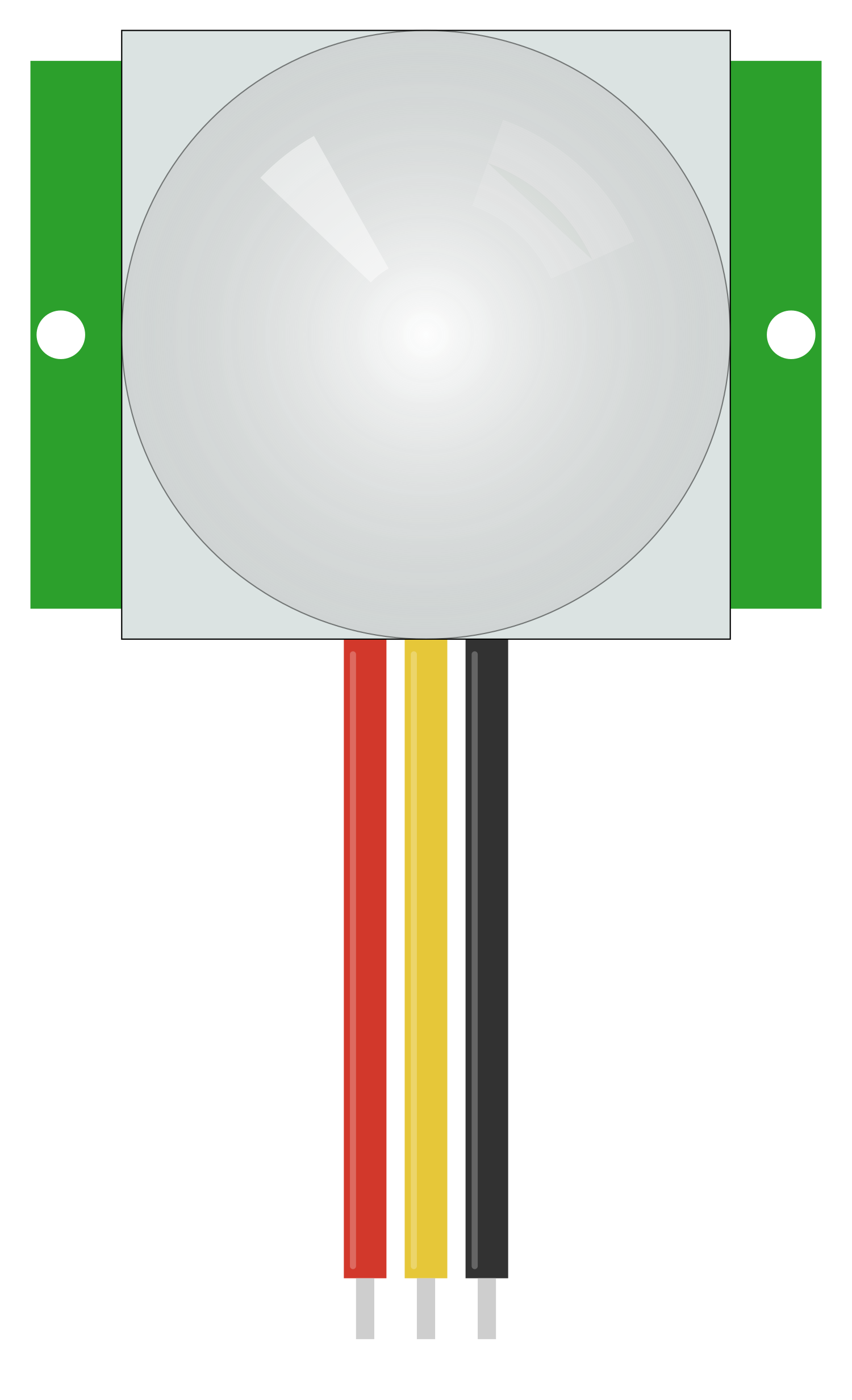
 Design with PIR sensor in Cirkit Designer
Design with PIR sensor in Cirkit DesignerIntroduction
A Passive Infrared (PIR) sensor is an electronic device that measures infrared (IR) light radiating from objects within its field of view. They are most often used in PIR-based motion detectors for applications such as security alarms, automatic lighting control, and energy efficiency systems. PIR sensors detect the movement of heat-emitting bodies, such as humans or animals, by sensing changes in the infrared spectrum.
Explore Projects Built with PIR sensor
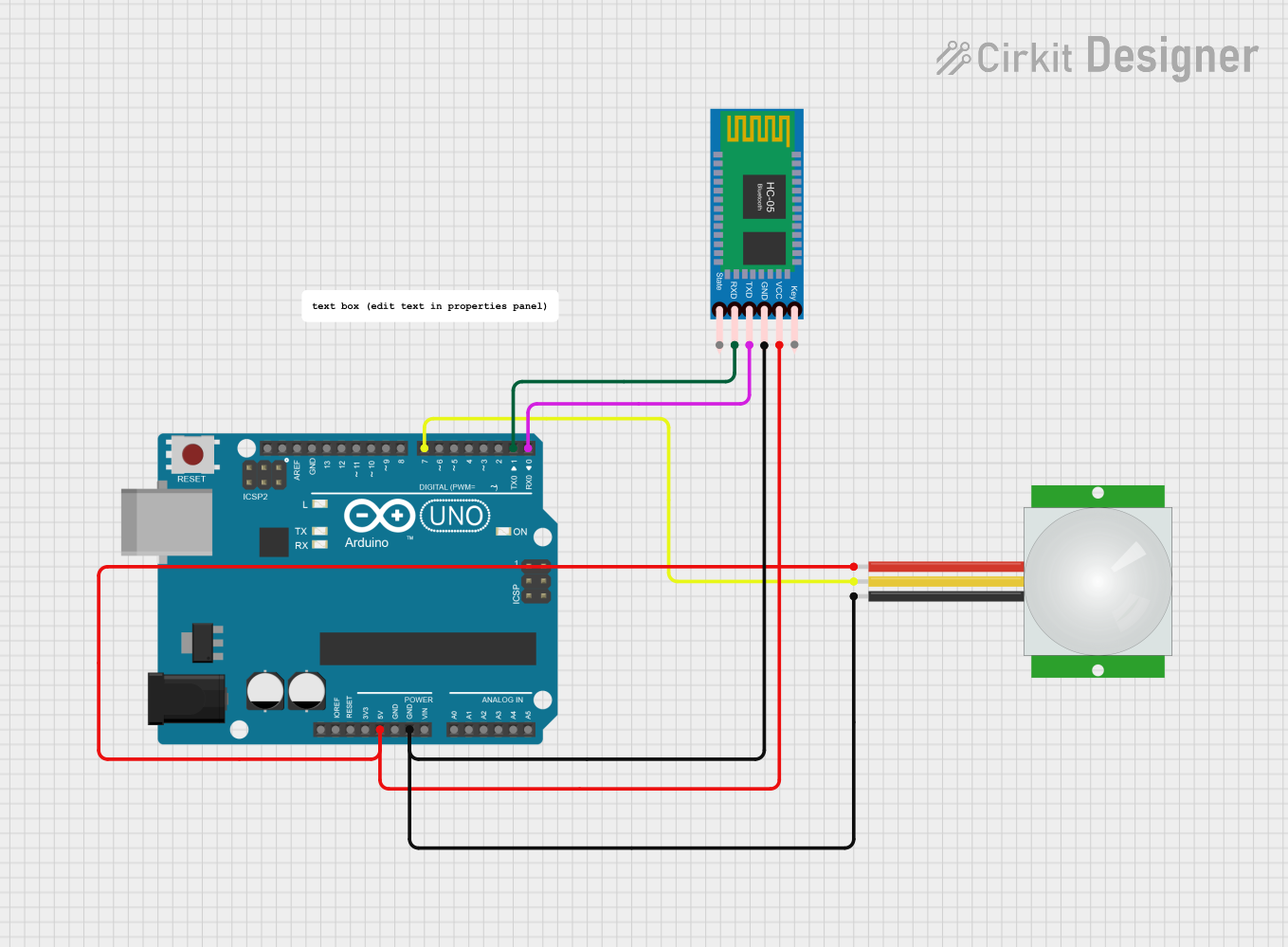
 Open Project in Cirkit Designer
Open Project in Cirkit Designer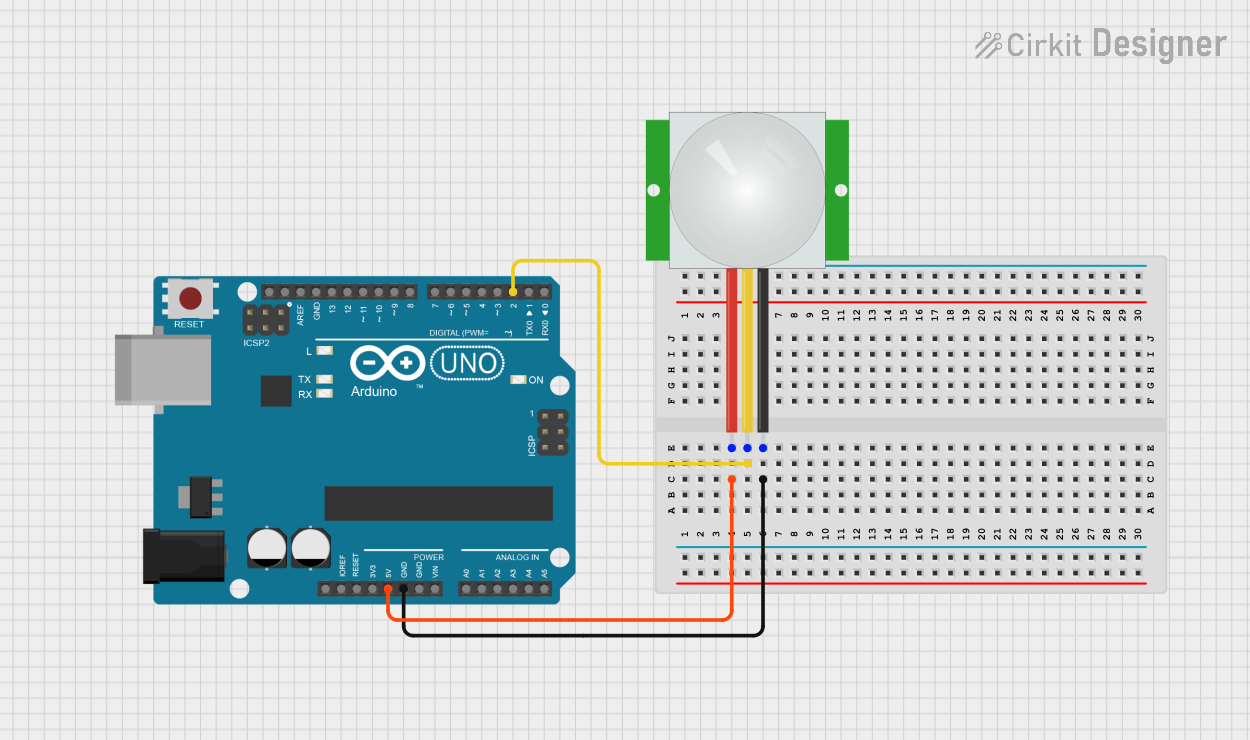
 Open Project in Cirkit Designer
Open Project in Cirkit Designer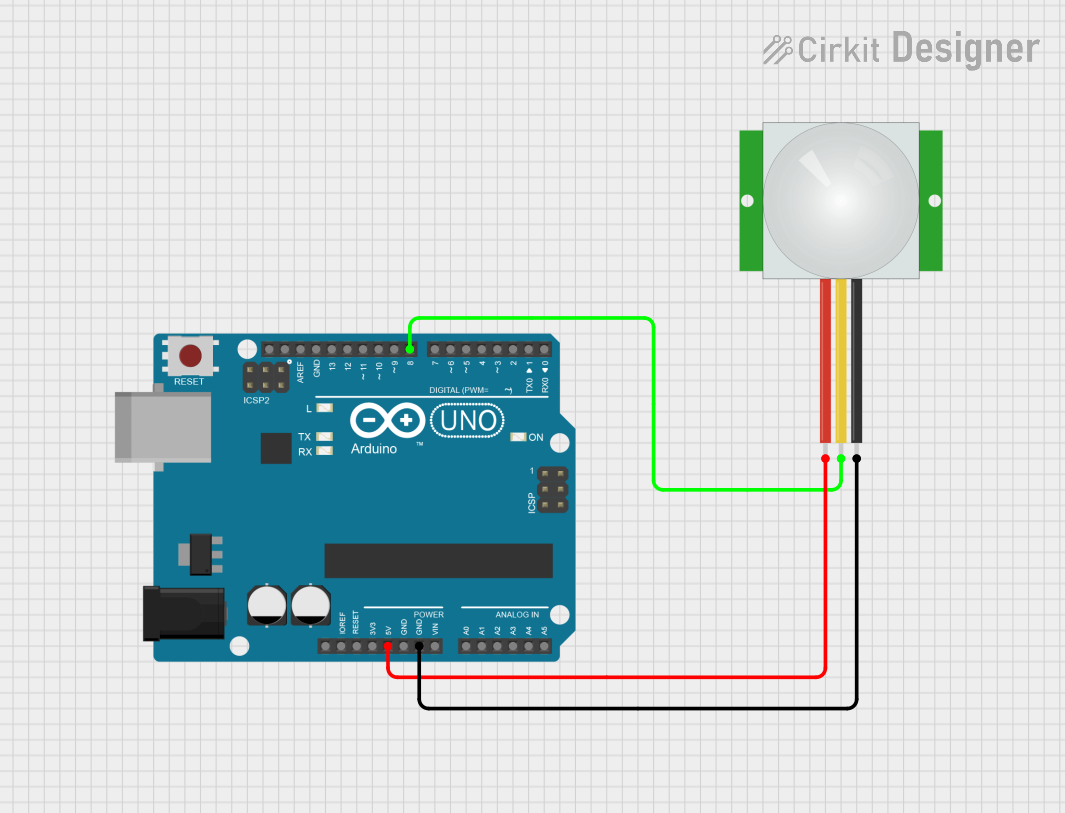
 Open Project in Cirkit Designer
Open Project in Cirkit Designer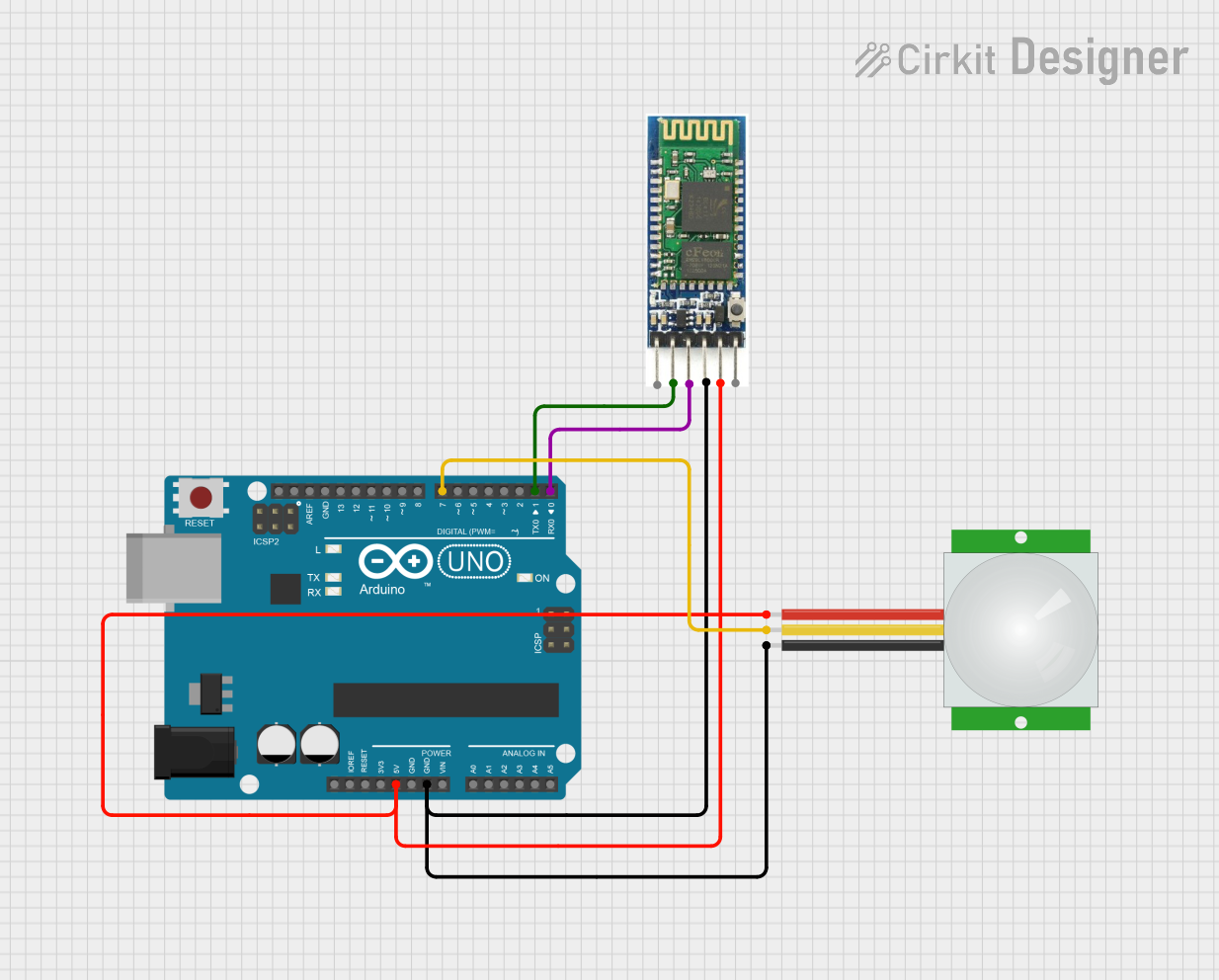
 Open Project in Cirkit Designer
Open Project in Cirkit DesignerExplore Projects Built with PIR sensor

 Open Project in Cirkit Designer
Open Project in Cirkit Designer
 Open Project in Cirkit Designer
Open Project in Cirkit Designer
 Open Project in Cirkit Designer
Open Project in Cirkit Designer
 Open Project in Cirkit Designer
Open Project in Cirkit DesignerTechnical Specifications
Key Technical Details
- Operating Voltage: Typically 5V to 12V DC
- Idle Current: <50uA
- Output Voltage: High/Low (3.3V TTL can be directly connected to microcontrollers)
- Detection Range: Up to 7 meters (adjustable)
- Detection Angle: Up to 120 degrees
- Warm-Up Time: Approximately 20-60 seconds
- Output Delay: Adjustable, from 5 seconds to 5 minutes
Pin Configuration and Descriptions
| Pin Number | Name | Description |
|---|---|---|
| 1 | VCC | Power supply input (5V-12V DC) |
| 2 | OUT | Digital output pin (High/Low) |
| 3 | GND | Ground connection |
Usage Instructions
Connecting to a Circuit
- Connect the VCC pin to the positive power supply (5V-12V DC).
- Connect the OUT pin to a digital input pin on a microcontroller.
- Connect the GND pin to the ground of the power supply and microcontroller.
Important Considerations and Best Practices
- Ensure that the sensor is placed in an area where it can have a clear view of the area to be monitored.
- Avoid placing the sensor near heat sources or in direct sunlight to prevent false triggers.
- Adjust the sensitivity and time delay according to the specific requirements of your application.
- Use appropriate pull-up or pull-down resistors on the OUT pin if required by your microcontroller.
Example Code for Arduino UNO
// Define the PIR sensor pin
const int PIRPin = 2; // Connect PIR sensor's OUT pin to digital pin 2
void setup() {
pinMode(PIRPin, INPUT); // Initialize the PIR sensor pin as an input
Serial.begin(9600); // Start serial communication at 9600 baud rate
}
void loop() {
int motionStatus = digitalRead(PIRPin); // Read the PIR sensor's output
if (motionStatus == HIGH) {
// When motion is detected, the output pin goes HIGH
Serial.println("Motion detected!");
// Add code here to handle the motion detection event
} else {
// When no motion is detected, the output pin stays LOW
Serial.println("No motion detected.");
}
delay(100); // Wait for 100 milliseconds before reading again
}
Troubleshooting and FAQs
Common Issues
- False Triggers: Adjust the sensitivity and delay settings. Ensure the sensor is not facing any heat sources or exposed to direct sunlight.
- No Response: Check the power supply and connections. Ensure the sensor has warmed up for the specified time.
- Intermittent Operation: Verify that the sensor is not in a high-traffic area where continuous movement is present.
Solutions and Tips for Troubleshooting
- Double-check wiring and connections for any loose contacts.
- Test the sensor with a simple LED circuit to confirm its operation before connecting to a microcontroller.
- Use serial print statements in your code to debug and understand the sensor's output.
FAQs
Q: Can the PIR sensor work through glass? A: No, most PIR sensors cannot detect motion through glass as it blocks the infrared waves.
Q: How can I adjust the sensitivity and time delay? A: Many PIR sensors come with potentiometers that allow you to adjust sensitivity and time delay.
Q: Is it possible to power the PIR sensor with a battery? A: Yes, as long as the battery provides a voltage within the sensor's operating range (typically 5V-12V DC).
Q: How long does the PIR sensor need to warm up? A: PIR sensors typically require 20-60 seconds to stabilize after being powered on.
Remember, this documentation is a starting point for working with PIR sensors. Always consult the specific datasheet for your sensor model for the most accurate information.